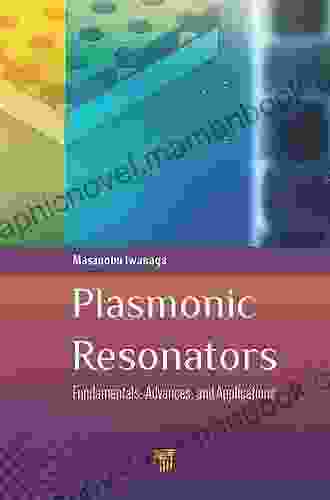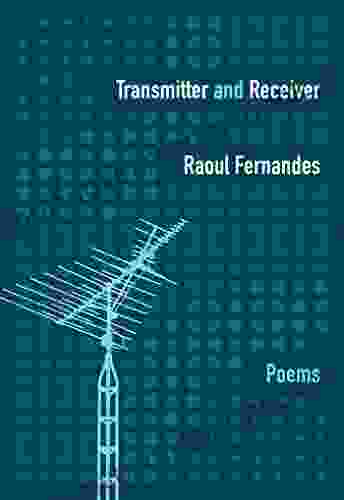Plasmonic Resonators: Fundamentals Advances And Applications

Plasmonic resonators are optical nanoresonators that utilize the resonant coupling of light with collective oscillations of free electrons in metallic nanostructures, known as surface plasmons. They offer unique optical properties and functionalities, enabling control and manipulation of light at the nanoscale. Plasmonic resonators have sparked significant research attention and have led to groundbreaking advancements in various fields, including nanophotonics, biosensing, photovoltaics, and nonlinear optics.
Fundamentals of Plasmonic Resonators
Surface Plasmons
Surface plasmons are collective oscillations of free electrons at the interface between a metal and a dielectric material. When light interacts with surface plasmons, it can excite these oscillations, leading to a strong confinement and enhancement of the electromagnetic field in the vicinity of the metal surface.
Resonance and Scattering
Plasmonic resonators are designed to exhibit specific resonant frequencies that depend on their geometry, material properties, and dielectric environment. At resonance, the incident light couples strongly with the surface plasmons, resulting in efficient light scattering and absorption. The resonance behavior can be tailored by carefully engineering the resonator's dimensions and shape.
5 out of 5
| Language | : | English |
| File size | : | 20290 KB |
| Text-to-Speech | : | Enabled |
| Screen Reader | : | Supported |
| Enhanced typesetting | : | Enabled |
| Print length | : | 325 pages |
Field Enhancement and Localization
Due to the resonant nature of plasmonic resonators, they offer exceptional field enhancement and localization. The electromagnetic field is concentrated within a small volume of space, which enables highly localized optical interactions and sensing capabilities.
Advances in Plasmonic Resonators
Metamaterials
Metamaterials are artificial materials that exhibit extraordinary optical properties beyond those of natural materials. By combining plasmonic resonators with metamaterial structures, researchers can achieve unprecedented control over light propagation, polarization, and phase.
Subwavelength Imaging and Microscopy
Plasmonic resonators enable subwavelength imaging and microscopy with unparalleled spatial resolution. By exploiting the strongly confined and enhanced electromagnetic fields, plasmonic resonators can surpass the diffraction limit of conventional optics, allowing visualization of objects that are much smaller than the wavelength of light.
Nonlinear Optics
Plasmonic resonators exhibit strong nonlinear optical responses, enabling the manipulation of light at the nanoscale. This capability paves the way for novel applications in non-linear optics, such as frequency conversion, optical switching, and the generation of tunable coherent light sources.
Applications of Plasmonic Resonators
Biosensing
Plasmonic resonators have revolutionized biosensing by providing ultra-sensitive and label-free detection of biological molecules. The localized field enhancements enable highly specific and selective interactions with biomolecules, allowing for real-time monitoring of cellular processes and early disease diagnosis.
Photovoltaics
In photovoltaics, plasmonic resonators can enhance light absorption and improve the efficiency of solar cells. By incorporating plasmonic resonators into solar cell devices, the path length of light inside the semiconductor material can be increased, maximizing light-matter interactions and boosting power conversion efficiency.
Optical Devices
Plasmonic resonators have paved the way for the development of compact and high-performance optical devices, such as optical filters, waveguides, and lenses. These devices are crucial for integrated photonic circuits and advanced optical systems.
Nonlinear Optics Applications
The strong nonlinear optical responses of plasmonic resonators enable a wide range of nonlinear optical applications. These include second-harmonic generation, third-harmonic generation, and parametric amplification. Plasmonic resonators hold promise for the development of efficient and compact nonlinear optical devices for communication, imaging, and sensing applications.
Plasmonic resonators have emerged as powerful tools for manipulating and controlling light at the nanoscale. Their unique optical properties and functionalities have opened up a plethora of applications in various fields. Ongoing research and advancements in plasmonic resonators continue to push the boundaries of nanophotonics and drive innovation in emerging technologies.
5 out of 5
| Language | : | English |
| File size | : | 20290 KB |
| Text-to-Speech | : | Enabled |
| Screen Reader | : | Supported |
| Enhanced typesetting | : | Enabled |
| Print length | : | 325 pages |
Do you want to contribute by writing guest posts on this blog?
Please contact us and send us a resume of previous articles that you have written.
 Top Book
Top Book Novel
Novel Fiction
Fiction Nonfiction
Nonfiction Literature
Literature Paperback
Paperback Hardcover
Hardcover E-book
E-book Audiobook
Audiobook Bestseller
Bestseller Classic
Classic Mystery
Mystery Thriller
Thriller Romance
Romance Fantasy
Fantasy Science Fiction
Science Fiction Biography
Biography Memoir
Memoir Autobiography
Autobiography Poetry
Poetry Drama
Drama Historical Fiction
Historical Fiction Self-help
Self-help Young Adult
Young Adult Childrens Books
Childrens Books Graphic Novel
Graphic Novel Anthology
Anthology Series
Series Encyclopedia
Encyclopedia Reference
Reference Guidebook
Guidebook Textbook
Textbook Workbook
Workbook Journal
Journal Diary
Diary Manuscript
Manuscript Folio
Folio Pulp Fiction
Pulp Fiction Short Stories
Short Stories Fairy Tales
Fairy Tales Fables
Fables Mythology
Mythology Philosophy
Philosophy Religion
Religion Spirituality
Spirituality Essays
Essays Critique
Critique Commentary
Commentary Glossary
Glossary Bibliography
Bibliography Index
Index Table of Contents
Table of Contents Preface
Preface Introduction
Introduction Foreword
Foreword Afterword
Afterword Appendices
Appendices Annotations
Annotations Footnotes
Footnotes Epilogue
Epilogue Prologue
Prologue Benn Steil
Benn Steil Pam Howes
Pam Howes Barry Wittenstein
Barry Wittenstein Erika Busecan
Erika Busecan Natalie Haynes
Natalie Haynes Amy Howard
Amy Howard Kahlil Koromantee
Kahlil Koromantee Kathleen Puente
Kathleen Puente Raoul Fernandes
Raoul Fernandes Blain Clear
Blain Clear Sebastien De Castell
Sebastien De Castell Joosr
Joosr Sean O Casey
Sean O Casey Veronica Bidwell
Veronica Bidwell Amanda Lovelace
Amanda Lovelace Keiko Tobe
Keiko Tobe Juby Aleyas Koll
Juby Aleyas Koll Dan Kluger
Dan Kluger Taylor Wilson
Taylor Wilson Samuel R Delany
Samuel R Delany
Light bulbAdvertise smarter! Our strategic ad space ensures maximum exposure. Reserve your spot today!
 Geoffrey BlairFollow ·14.1k
Geoffrey BlairFollow ·14.1k Oscar WildeFollow ·16.7k
Oscar WildeFollow ·16.7k Jeffrey HayesFollow ·15.2k
Jeffrey HayesFollow ·15.2k Brett SimmonsFollow ·3.1k
Brett SimmonsFollow ·3.1k Theo CoxFollow ·4.7k
Theo CoxFollow ·4.7k Orson Scott CardFollow ·6.2k
Orson Scott CardFollow ·6.2k Arthur Conan DoyleFollow ·17.2k
Arthur Conan DoyleFollow ·17.2k Chance FosterFollow ·16.6k
Chance FosterFollow ·16.6k

 Rex Hayes
Rex HayesWorld of Dead Volume Issue: An In-Depth Analysis
The World of Dead volume issue...

 Nathan Reed
Nathan ReedHard Lessons Learned from ERP Rollouts: A Hivemind...
Enterprise...

 Fernando Bell
Fernando BellWith the Light, Vol. 1: Illuminating the Extraordinary...
The advent of parenthood is a...

 Wesley Reed
Wesley ReedNo Helping Hand: True Story of Deadly Waves
In December 2004,...

 Ruben Cox
Ruben CoxIntroduction to Electrodynamics by David Griffiths: A...
to Electrodynamics by...
5 out of 5
| Language | : | English |
| File size | : | 20290 KB |
| Text-to-Speech | : | Enabled |
| Screen Reader | : | Supported |
| Enhanced typesetting | : | Enabled |
| Print length | : | 325 pages |














